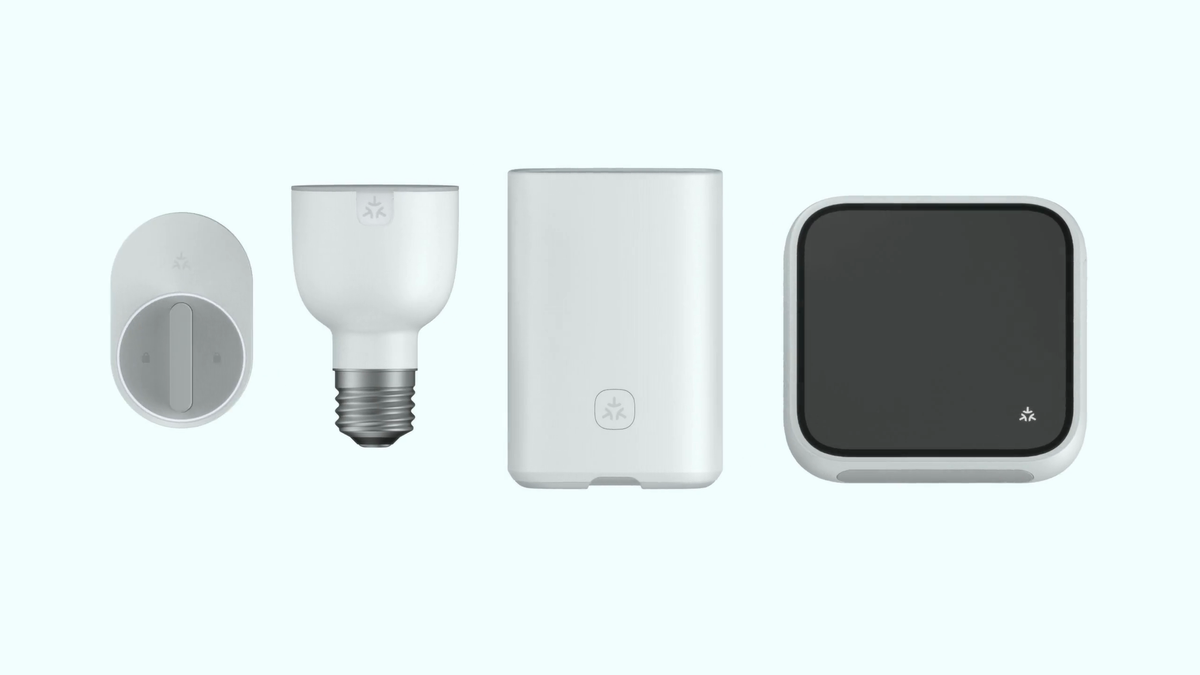Why You Need “Matter”, a New Open Standard for Smart Home Devices

My entire home is smart: I remotely control when the lights turn on and off, when the plants are watered, when the humidifiers and air conditioners turn on, and even what I listen to when I go to bed. There are few things as satisfying to a child of the 80s as shouting commands into the air and causing a magical event to happen. But there’s a problem: all these devices use different standards. The result is multiple hubs throughout your home, multiple apps and devices that can be overwhelming to set up. The new technology standard for smart home devices , Matter, is set to change that. That’s why it’s important.
What is matter?
No one company will meet all your smart home needs. I have Philips light bulbs, Meross sockets, a Hunter irrigation system, and Midea air conditioners. In some cases, these products require you to purchase a separate hub from them that acts as a controller, and almost all of them also have an app that you need to download. They use several different connection standards such as Zigbee, Z-wave, Ha-low and others, and no single standard dominates the market.
Once the products are up and running, you can simply add them to a home control center like SmartThings or Google Home (and, in limited cases, Apple HomeKit or Alexa). Most of the time you’re interacting with your home control system, so you don’t have to think about the messy spaghetti of technology underneath, but you still need all those random apps on your phone and extra hardware hanging around your house. When your power goes out, it’s a chaos of notifications and when shopping, it becomes an additional hurdle to ensure that the device you buy uses a standard that will be accepted by your home control center.
In the future of the Matter standard, there will be no separate hubs and applications – just one accepted standard used by everyone. No more choosing between Apple or Google to control your home: you can use whatever you want. The universality of Matter means that you choose one control center of the house and stick to it, integrating everything else with it. Best of all, any company can create a Matter home control center and it will work with all Matter devices. The devices work over Wi-Fi, Ethernet and Thread, but you may need a bridge to Thread. (Some Matter home control centers have this bridge, but some do not yet.)
Additional benefits of using Matter
Matter devices should work even when the Internet is turned off, running on a local network. This is a big deal. While most smart devices can also be controlled manually (you can flip a switch for a light to come on, or turn on the air conditioner by pressing a button), homeowners often hide away switches and the like and rely solely on smart functions. In the Matter setup, scenes and automation will continue to work.
Is Matter ready to go?
Matter 1.0 was released last year, and since it is a technology standard, features and support will be gradually expanded. The first release covered some basic smart devices and commands for lights, switches, etc. Version 1.1, released last spring, fixed some bugs and made things easier for developers, but did not expand the list of devices. However, the roadmap includes the entire range of devices, and the next set will expand to include home appliances such as vacuum cleaners, washing machines, dryers and refrigerators.
The best part? Almost all the major players in the field have agreed to sign up to this standard, and it appears to be widely accepted . Ring is the only major company that hasn’t signed on, and while most security device makers are committed to Matter, there’s a long way to go to achieve compatibility. Here is a list of all currently compatible devices.
What about all my existing devices?
All currently existing devices are divided into several categories:
- Devices that will receive software updates over Wi-Fi that will help it comply with the new Matter standard.
- The hubs (and not the devices on them) will be updated, which means that the devices will work with Matter, but it will not be possible to abandon the extra hub.
- There is speculation that Zigbee devices will also be able to receive updates.
- All other devices will still continue to work with their existing systems. Bluetooth devices are expected to fall into this group.
While that last one sounds like a bummer, it’s actually not. First, you’ll likely continue using the same home control center you’re already using, such as Apple HomeKit or Google Home. Everything will continue to work with it as always, and you can opt out of additional hubs and applications for any devices that are updated. You’ll just have to stick with the ones who don’t.
You won’t have to add new hubs or apps as you purchase new products. As devices become obsolete, you will replace them with Matter-compatible devices. Eventually, your entire system will be made up of the devices of Matter, and everything will work in harmony.
The essence
In the future, your home and phone may become lighter with several existing hubs and apps, but any new devices will not require additional hardware and software once this group of devices is supported by Matter. Don’t buy new smart devices unless they come with Matter support built-in, and check to see if your existing devices can receive the Matter update. In cases where all devices in the hub are up to date, you can try abandoning the hub and the app.